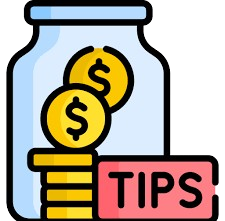New York City is a timeout on the world map? Well, practically speaking, finding a place that one can afford can almost seem totally impossible. After all, the housing crisis in NYC is one only too real. But fear not; this guide will take you step-by-step through affording a home and housing options. That will include eligibility, application, and finally, some other resources. We try to give you a broad overview of the affordable housing scene in NYC, including what one must qualify for, how to apply, and other means to find housing.
Understanding Affordable Housing in NYC
First off, what does “affordable housing” mean here? It is not simply cheap rent but rather housing that fits your income. There are different types of programs, each with its standards and requirements. It gets very confusing very quickly.
What is Affordable Housing?
Affordable housing is where one considers one’s income vis-à-vis the Area Median Income (AMI). AMI is considered the average income for the NYC area. If one is making a certain percentage of the AMI, then he or she might qualify for affordable housing. The apartments or houses under Section 8 are subsidized. Subsidized, in this means, lower rent was given with much help from the government. In a nutshell, it guarantees that housing does not take out any part of a paycheck.
Types of Affordable Housing Programs
There are different programs in NYC. Some of the more common ones include the following:
Mitchell-Lama: Affordable rents and co-op buildings among these developments. They have been around since the 1950s and 60s.
NYCHA (New York City Housing Authority): Public housing for low-income residents.
Section 8 (Housing Choice Vouchers): Vouchers help you pay rent in privately owned apartments.
Inclusionary Housing: New developments set aside a certain percentage of units to be sold or rented to people in need.
HPD Programs: The Department of Housing Preservation and Development has a range of programs providing affordable housing.
Income Restrictions and AMI
The primary factor is really AMI: to qualify, your income must be below a certain percentage of AMI. That percentage differs by program and by household size. For example, a single person might have to earn less than $60,000 in one of the programs, whereas a family of four could have an income cap of $80,000 on others. Be sure to check for the income limits for any specific program. There’s a variation in requirements.
Eligibility Requirements and the Application Process
The requirements for each program are different. Meeting them is essential to be approved for whatever assistance you seek. Let’s look at common pointers you will typically require.
Criteria To Be Met
Most programs have set criteria for eligibility; here is a rundown:
Age Restriction: Some of the programs are for senior uncle and aunties, and some are for young adults.
Residency Requirement: Some prerequisite includes that they should be a residence of NYC for some time.
Income Verification: Documentation proving income from pay stubs to tax returns is required.
Assets Limitations: Some programs have limits on the amount of money and assets.
Criminal Records And Background Check: You should expect a criminal background check.
Step-By-Step Application Guides
Application can be somewhat hard, so here’s a way you could think through applying for some of the more well-known programs:
NYCHA: Online Application on the NYCHA website – Be sure to have proof of income as well as ID ready.
Section 8: Contact the local PHA. They will help with the entire application procedure after obtaining the request. Please be advised that waitlists are generally long.
The Common Mistakes that Deny One the Benefits
Avoid doing these:
Incomplete Applications: Fill in all sections. Don’t leave anything blank.
Do Not Misrepresent: Be truthful. Give correct information about your income and household.
Missed Deadlines: Be sure you pay attention to deadlines; everything should be submitted within these deadlines.



